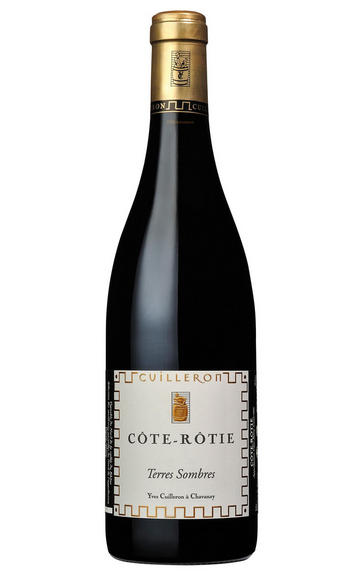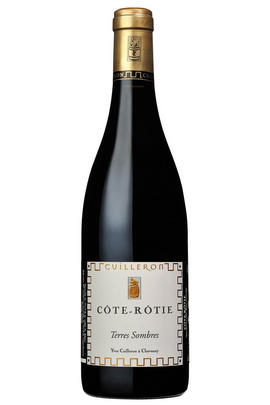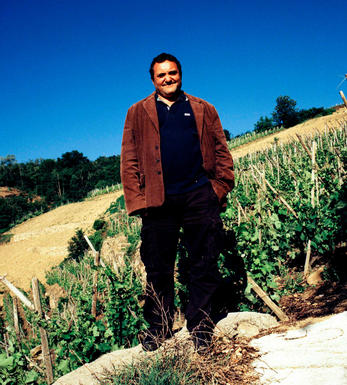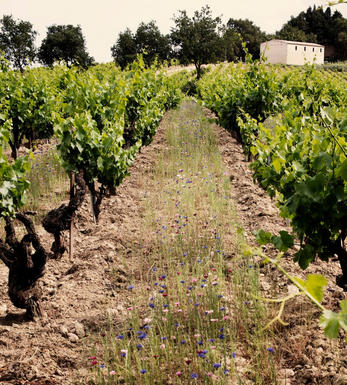
2010 Côte-Rôtie, Terres Sombres, Yves Cuilleron, Rhône

About this WINE

Domaine Yves Cuilleron
Founded by his grandfather in 1920, Yves is the third generation of Cuilleron vignerons. Since taking over in 1987, he has grown the vineyard area to 75 hectares, spanning the length of the Northern Rhône. Based in Chavanay, just south of the town of Condrieu, he makes over 40 cuvées from the range of appellations: half red, half white. The domaine is converting to organic certification, aiming to complete in 2025. In addition to the time spent in his vines and cellar, Yves is passionate about the research and revival of traditional, indigenous varieties.
We will offer two of Yves’s top Condrieu cuvées, Vernon and Verlieu. These single vineyard offerings are made like red wines, seeing 18 months ageing in demi-muids (a portion of which is new wood) and lees stirring, to be differentiated only by their vineyard - and notably the type of granite on which they grow. Complex and age-worthy, Yves cautions to drink them within seven years of vintage or to wait a further five to 10 (at risk of finding them in a closed spell).

Côte-Rôtie
Côte-Rôtie is one of the most famous of the northern Rhône appellations, with some single vineyard cuvées now selling for the same prices as First Growth Bordeaux. It is the northernmost outpost of the Syrah grape.
Côte-Rôtie translates as ‘roasted hillside’, as the south-facing slopes are exposed to the maximum-possible sunlight. Vines have been planted here since Roman times, although the appellation was only created in 1940. Today it covers 500 hectares, with 276 hectares of vineyards stretched across eight kilometres.
Phylloxera devastated vineyards in the late 1800s and Côte-Rôtie’s fortunes remained in the doldrums for another century. After the War, a farmer would receive double the price for a kilo of apricots as for a kilo of grapes, hence vineyards were grubbed up and wine production became increasingly smaller.
It has only really been recognised as a top-quality wine-producing area since the 1970s, with Guigal being the main impetus behind its revival. The two best slopes, Côte Brune and Côte Blonde, rise steeply behind Ampuis and overlook the river. The Côte Brune wines are much firmer and more masculine (the soils are clay and ironstone), whereas the Côte Blonde makes wines with more finesse and elegance due to its light, sandy-limestone soil. Both the Côte Brune and Côte Blonde vineyards rise to 1,000 feet, with a gradient of 30 to 50 degrees.
The wines are made from the Syrah grape, however up to 20 percent of Viogner can be used in the blend, adding finesse, elegance and floral characteristics to the wine. Viognier ripens more quickly than Syrah and the appellation rules stipulate that the grapes must be added to the fermentation – rather than blended later. The best Côte-Rôtie are very deep in colour, tannic and spicy, and need 10 years to evolve and develop.
There are nearly 60 official vineyards (lieux-dits); the best-known are: La Mouline, La Chatillonne (Vidal-Fleury, owned by Guigal) and La Garde (Rostaing) in Côte Blonde; La Viallière, (Rostaing), La Landonne (Guigal, Rostaing) and La Turque (Guigal) in Côte Brune.
Styles vary from heavily-extracted tannic wines which need many years to soften through to lighter, supple and less-structured wines which do not require extended bottle ageing. The most famous wines of Côte-Rôtie are Guigal’s three single-vineyard cuvées: La Mouline, La Turque and La Landonne. These are aged in new wood for 48 months, and demand for them amongst connoisseurs and collectors is significant, leading to prices sometimes comparable to Bordeaux First Growths.
Recommended producers: Guigal, Gerrin, Rostaing, Ogier, Burgaud
Best vintages: 2006, 2005, 2004, 2001, 1999, 1991, 1990, 1985

Syrah/Shiraz
A noble black grape variety grown particularly in the Northern Rhône where it produces the great red wines of Hermitage, Cote Rôtie and Cornas, and in Australia where it produces wines of startling depth and intensity. Reasonably low yields are a crucial factor for quality as is picking at optimum ripeness. Its heartland, Hermitage and Côte Rôtie, consists of 270 hectares of steeply terraced vineyards producing wines that brim with pepper, spices, tar and black treacle when young. After 5-10 years they become smooth and velvety with pronounced fruit characteristics of damsons, raspberries, blackcurrants and loganberries.
It is now grown extensively in the Southern Rhône where it is blended with Grenache and Mourvèdre to produce the great red wines of Châteauneuf du Pape and Gigondas amongst others. Its spiritual home in Australia is the Barossa Valley, where there are plantings dating as far back as 1860. Australian Shiraz tends to be sweeter than its Northern Rhône counterpart and the best examples are redolent of new leather, dark chocolate, liquorice, and prunes and display a blackcurrant lusciousness.
South African producers such as Eben Sadie are now producing world- class Shiraz wines that represent astonishing value for money.


Buying options
Add to wishlist
Description
One of my favourite Côte Rôties of our week’s tasting there, the evocatively named Terres Sombres is far from saturnine, although it does not lack for depth of colour or profundity of outlook. The reputation of La Vaillière, a vineyard which makes a significant contribution to this wine, continues to soar; the wine has all the classic ingredients; finely poised acidity, beguiling floral aromatics, generous fruit and almost balletic poise in the mouth.
Simon Field MW, BBR Buyer, February 2012
Our visit to Yves this year, despite its first-after-lunch graveyard slot, was one of the best of them all. Perhaps it was a fruit day! The wines were singing and Yves was composed and confident, clearly very happy with the vintage. For him the long ripening season of 2010, with its significant diurnal temperature variations, was the key to quality. The vigneron’s Grand Master chess skills were fully exercised in the decision of when to harvest… a tricky decision of course, each plot being different, but now, finally I understand the purpose of each of the many varied cuvées in the range and there appears to be some stability and a real sense of purpose in the winemaking….and not too much new oak now…..The enfant terrible has really come of age…
wine at a glance
Delivery and quality guarantee